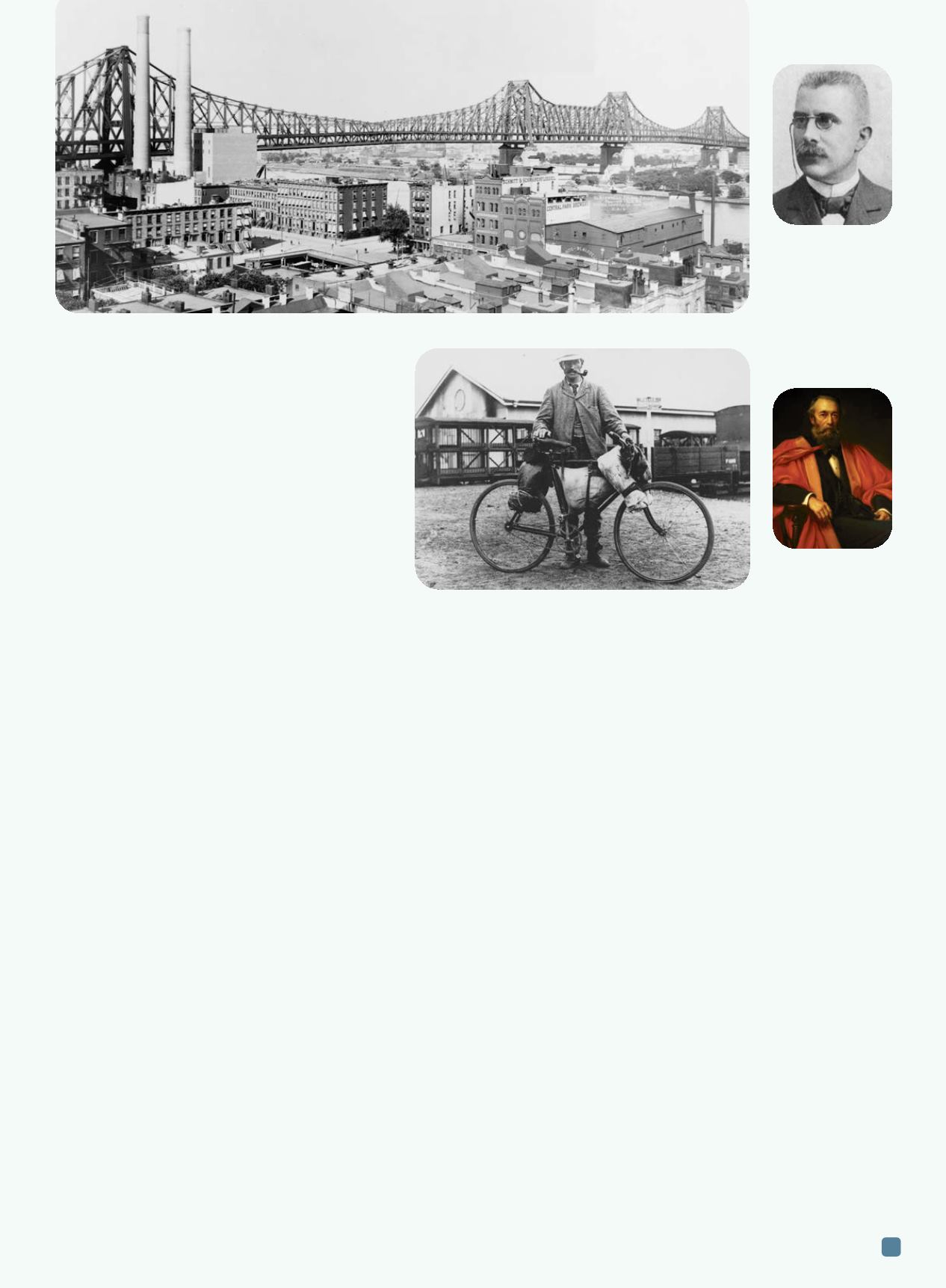

ADVANCED MATERIALS & PROCESSES •
JULY 2014
35
Automobiles usher in alloy steel era
It was the automobile that initiated the Age of
Alloy Steel. The number of alloy steels used in the
auto industry increased throughout the decade of
1910-1920. Walter Jominy, a metallurgist from the
University of Michigan who worked for the Stude-
baker Automobile Co., published a list of 12 alloy
steels in 1920 that he said filled all the needs for
building automobiles.
WorldWar I provided additional emphasis on the
use of alloy steels and on the process of heat treat-
ment. The quantity of alloy steel made in the U.S.
reached more than 1 million tons in 1918, and the
widespread use of alloy steel increased the need to
both acquire and share information about heat treat-
ing, which previously had been a guarded art.
William Park Woodside, a former blacksmith, began
holding meetings in Detroit to exchange information
among heat treaters in the early auto industry. These
meetings lead to the formation of a formal group
called the Steel Treaters Club, which eventually be-
came the American Society for Steel Treating.
These early groups formed chapters in various in-
dustrial regions across the country and published
data sheets on the technical aspects of heat treating.
Soon they provided a publication called
Transactions
for serious researchers to publish their papers. In
1930, the American Society for Steel Treating pub-
lished a magazine called
Metal Progress
(now
Ad-
vanced Materials & Processes
). It became the most
popular source of information in all of metalworking,
not just heat treating. The society changed its name
in the early 1930s to the American Society for Met-
als and later to ASM International.
The early science of steel
The first interest in examining the nature of steel
came just after the midpoint of the 19th century.
Henry Clifton Sorby of Sheffield, England, exam-
ined polished and etched surfaces of meteorites and
several commercial steels during 1863-1866. Sorby
discovered that the microstructure of steel was
complex and he found an area that he called
“pearly.” Later, Floris Osmond of France and Adolf
Martens of Germany published their examination
of polished and etched surfaces of steel in the
Jour-
nal of the Iron and Steel Institute
of Great Britain.
Their work reawakened Sorby’s interest in an area
he had worked on more than 20 years earlier. Sorby
immediately began a new examination of the mi-
crostructure of steels. He published his work in the
British
Journal of the Iron and Steel Institute
in 1887.
This new work by Sorby, along with that of Osmond
and Martens, is considered the true beginning of the
field of metallography, the study of the internal
structure of metals. From this point forward, the
ever increasing research into how the behavior of
metals relates to their structure has been the foun-
dation of our modern technological age.
A second major development at this time was a
new measuring tool for high temperatures invented
by Henry Louis Le Chatelier of France, which used
platinum-platinum/rhodium thermocouples. Os-
mond immediately put the new thermocouple to use
in measuring the so called
critical temperatures
in
steel. These temperatures—where changes were
noted in the rates of cooling or heating—were first
pointed out by Russian metallurgist D.K. Tchernoff.
He stated that steel could not be hardened upon
quenching until it was first heated above the upper-
most critical temperature. These temperatures were
believed to represent important internal changes in
steel. The study of critical temperatures as a function
of a steel’s carbon content lead to the field of binary
phase diagrams, which was the next advance in un-
derstanding the complexity of steel.
For more
information:
Charles R. Simcoe
can be reached at
crsimcoe@yahoo.com.
For more metallurgical
history,
visit
metals- history.blogspot.com.
Queensboro Bridge made of nickel steel, New York City, circa 1908. Courtesy of Library of Congress.
Henry Louis
Le Chatelier of
France developed
high-temperature
platinum-
platinum/rhodium
thermocouples,
useful for measuring
critical temperatures
in steel.
Henry Clifton Sorby
of England, an early
pioneer of
metallography.
Courtesy of
University of
Sheffield.
Bicycles at the turn of the century used 5% nickel steel in
their chains, the first widespread industrial use of an alloy
steel. Courtesy of State Library of Queensland.


















